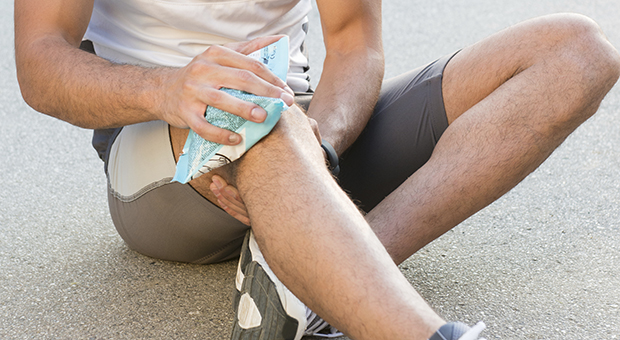The Medical Minute: How to know whether ice or heat will ease the pain

To ice or not to ice — that is the question.
Or maybe the real issue is to heat or not to heat?
Either way, whether you're dealing with a one-time injury or chronic aches and pains, a few simple guidelines will help you know whether it's best to bag some ice or get the trusty heating pad.
Dr. Scott Lynch, director of sports medicine at Penn State Hershey Medical Center, says it's all about blood flow. When you injure yourself, you should follow a prescription known as RICE – rest, ice, compression and elevation.
“Elevation is probably the most important thing because it limits the amount of blood flow to the area and the amount of swelling,” he says.
Cold temperatures applied to an injury help constrict, or narrow, the blood vessels and keep blood from accumulating there, potentially causing too much inflammation or swelling that can delay the healing process.
Dr. Cayce Onks, family and sports medicine physician at Penn State Hershey, says icing an injury for the first 48 to 72 hours after it occurs can reduce the amount of secondary tissue damage. Ice also can help decrease pain.
The recommendation is to use ice for 20 minutes, once an hour. That's so you don't create additional issues such as frostbite or damage to the skin. It also gives the skin a chance to recover from each icing session.
While special freezer packs are readily available, Onks says plain old ice in a bag is still the best. “You can mold it around the injury and get more coverage,” he says. “You also have to keep in mind that because of the chemicals in freezer packs, they can get much colder than ice and you could cause temperature-related skin problems.”
Heat, on the other hand, is often used to alleviate muscle aches and pains, or to loosen up tense and sore areas before activity.
“Heat typically brings blood flow to the area, which provides nutrients that the tissues need for healing,” Onks says. “It can also increase the flexibility of tendons and muscles.”
Athletes who have chronic issues or old injuries typically heat before they are active and ice afterward. Using a moist heat can also help because some people feel like the extra humidity helps with penetration of the heat.
In an athletic training room or physical therapy setting, providers can also produce deeper heat by using ultrasound. But generally a heating pad or a corn pack you put in the microwave to heat up will do the trick.
Commercially available heat patches or products such as Icy Hot may provide temporary or superficial relief, but they don't typically offer the penetration of ice, moist heat or ultrasound.
That doesn't mean you shouldn't use them though.
“A lot of it just depends on what feels good with chronic injuries,” Onks says. “It's one of those things where some people get relief from heat and some from ice. Though with acute injuries, you would want to stick with ice.”
The Medical Minute is a weekly health news feature from Penn State Milton S. Hershey Medical Center. Articles feature the expertise of Penn State Hershey faculty physicians and staff, and are designed to offer timely, relevant health information of interest to a broad audience.
If you're having trouble accessing this content, or would like it in another format, please email Penn State Health Marketing & Communications.
